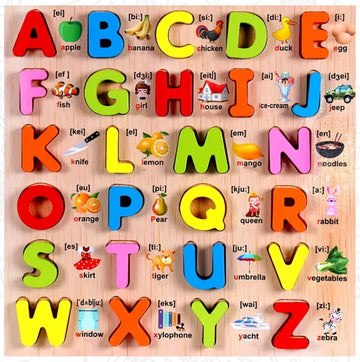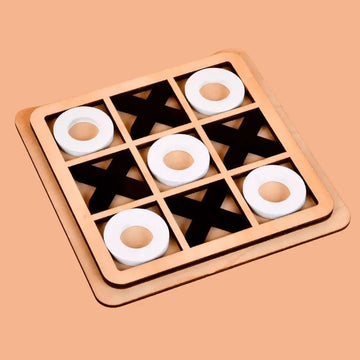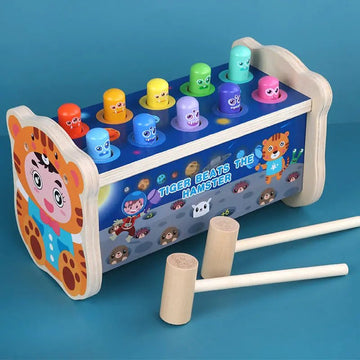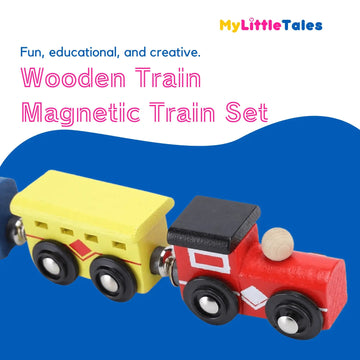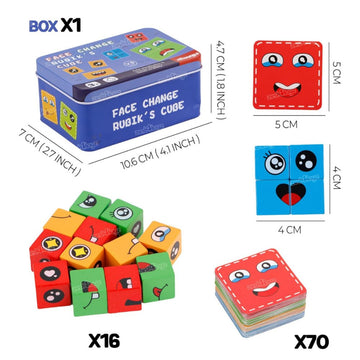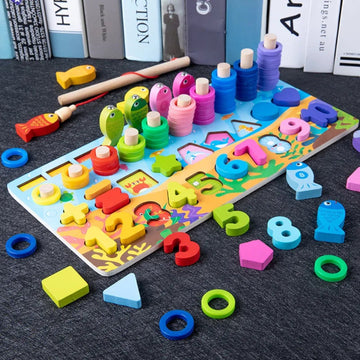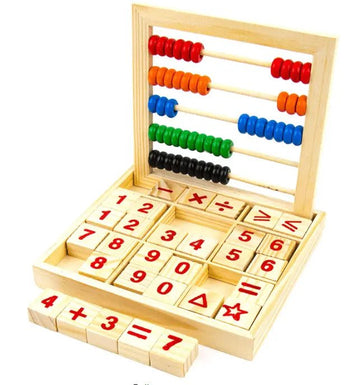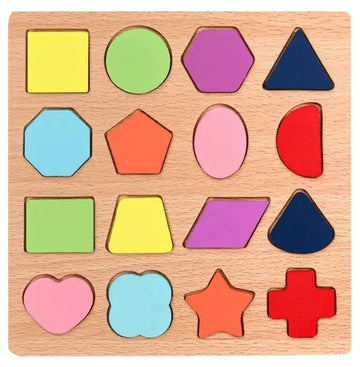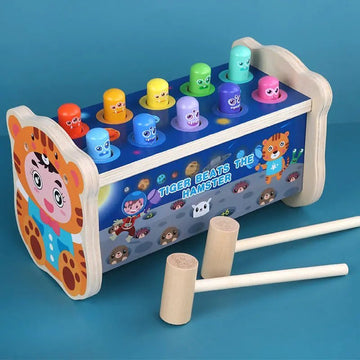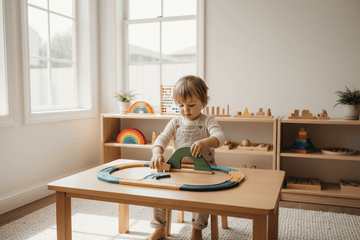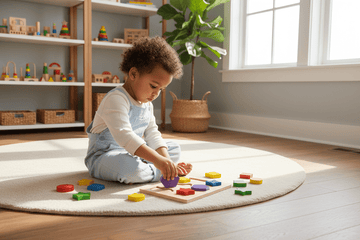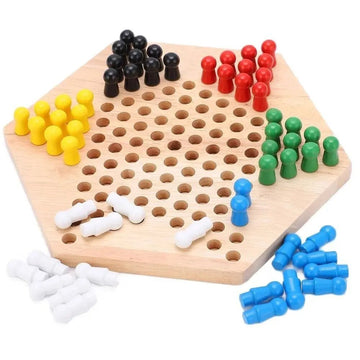Nurturing Tiny Fingers: The Power of Montessori Play
As parents, we witness the wonder of our toddlers discovering their world through touch. Those small hands reaching, grasping, and exploring represent crucial developmental milestones that shape future abilities. Montessori-inspired toddler fine motor skills toys offer a thoughtful pathway to nurturing these essential capabilities through purposeful play rather than passive entertainment.
The difference between ordinary toys and those designed with Montessori principles lies in their intentional design. While colorful plastic toys with flashing lights might momentarily captivate attention, wooden Montessori materials invite children into a relationship with learning that respects their natural development. For parents seeking quality educational experiences that truly support growth, understanding which fine motor toys deliver genuine developmental benefits becomes essential.
Our carefully curated exploration combines timeless wooden craftsmanship with proven Montessori principles to support your child's natural developmental journey. These materials don't merely occupy time; they build the foundation for writing, self-care, and countless practical life skills your child will carry forward.
The Montessori Approach to Fine Motor Development
Maria Montessori recognized something profound about children: they develop precision in their movements through purposeful activity rather than direct instruction. This insight forms the cornerstone of Montessori fine motor development, where carefully designed materials invite children to refine their movements through repetition and self-correction.
Unlike conventional educational approaches that might rush children toward writing before their hands are ready, Montessori methodology prepares the hand indirectly through materials that strengthen the precise muscle groups needed for later skills. This preparatory work happens naturally as children engage with materials that intrinsically motivate them to practice movements like pinching, grasping, and controlled release.
Why Purposeful Materials Matter for Little Hands
The materials chosen for toddler fine motor development in Montessori environments aren't selected arbitrarily. Each serves specific developmental purposes while adhering to principles of beauty, quality, and purpose. Natural materials like wood provide sensory feedback that plastic cannot replicate, helping children gauge pressure and develop appropriate strength.
Montessori materials typically isolate one skill or concept at a time, allowing toddlers to focus without overwhelming stimulation. This intentional simplicity helps children master movements with precision rather than developing imprecise habits that might require correction later.
The weight and texture of wooden manipulatives provide natural resistance that strengthens small hand muscles. When a child works with a wooden puzzle or threading activity, they receive immediate tactile feedback about their movements, allowing for self-correction and refinement without adult intervention.
Research consistently shows that fine motor development correlates strongly with cognitive development and academic readiness. By investing in quality Montessori materials that support hand development, parents simultaneously nurture neural pathways that support problem-solving, concentration, and executive function.
Essential Montessori Toys That Enhance Dexterity
The beauty of Montessori materials lies in their progression from simple to complex, allowing children to build skills systematically. Beginning with whole-hand grasping activities and moving toward precise pincer grip work, these materials support development at every stage.
Progression of Manipulatives from Simple to Complex
For the youngest toddlers (12-18 months), materials focus on whole-hand coordination and basic cause-and-effect relationships. Object permanence boxes, where children drop balls through holes and retrieve them from a drawer below, develop hand-eye coordination while building cognitive understanding. Simple knobbed puzzles with single pieces provide an early introduction to precision grip as little fingers wrap around the knobs.
As toddlers progress (18-24 months), threading activities become appropriate. Large wooden beads with sturdy laces develop hand-eye coordination while strengthening the pincer grip. Stacking toys with graduated sizes introduce concepts of order while requiring increasingly precise placement.
For older toddlers (2-3 years), more complex manipulatives become appropriate. The Tiger Beats the Hamster 10 Peg Hammer represents an ideal activity for this stage, combining precision with controlled force as children position and hammer wooden pegs. This delightful toy not only strengthens hand muscles but introduces early concepts of force regulation, spatial awareness, and cause-effect relationships through joyful activity.
Other valuable materials for this age include:
- Wooden puzzles with small knobs requiring precise finger placement
- Pouring activities using small pitchers with beans or water
- Twisting activities like nuts and bolts or lock boards
- Practical life tools sized for small hands, like child-sized tongs for transferring objects
Each of these materials builds upon previously developed skills while introducing new challenges that prepare hands for increasingly complex tasks. The progression isn't arbitrary but follows the natural development of the child's muscular control and cognitive readiness.
Incorporating Fine Motor Activities into Daily Routines
The Montessori approach recognizes that learning doesn't happen only during designated "activity time" but throughout daily life. Fine motor development flourishes when opportunities for meaningful work are integrated into everyday routines.
Simple adjustments to home environments can transform ordinary moments into developmental opportunities. During mealtime, offering appropriately sized utensils and allowing toddlers to serve themselves small portions builds independence while strengthening hand muscles. Dressing becomes a fine motor activity when clothing features large buttons, snaps, or zippers that little fingers can manipulate with growing confidence.
In the bathroom, providing a small pitcher for hand-washing allows toddlers to practice pouring skills. Even tidying up becomes a fine motor exercise when children sort small objects into appropriate containers or fold simple cloths for storage.
Creating an Accessible Environment for Independent Skill Building
The physical environment plays a crucial role in supporting fine motor development. Montessori environments feature low shelves where materials are displayed attractively, inviting children to select activities independently. This accessibility empowers children to follow their interests while practicing the reaching, grasping, and carrying movements that strengthen hands.
Consider creating a dedicated shelf in your home where fine motor activities are displayed. Rotate materials regularly to maintain interest while ensuring each item has a specific place to be returned after use. This organization helps children develop executive function skills alongside manual dexterity.
The prepared environment should include:
- A child-sized table and chair where concentrated work can occur comfortably
- A limited selection of materials to prevent overwhelming choices
- Materials organized by difficulty level, with new challenges introduced gradually
- Practical life tools that allow participation in household activities
By thoughtfully arranging spaces to support independence, parents create conditions where fine motor skills develop naturally through daily living rather than through artificial exercises.
Supporting Your Child's Developmental Journey
As you observe your toddler working with fine motor materials, resist the urge to demonstrate "correct" techniques or help them complete tasks. Montessori education values process over product, recognizing that the developmental benefits come from the child's own efforts rather than perfect results.
Instead of direct instruction, consider these supportive approaches:
- Observe carefully to understand your child's current abilities and interests
- Demonstrate materials slowly and with minimal language when first introducing them
- Allow ample time for exploration without rushing toward completion
- Acknowledge effort rather than praising results
- Prepare activities that are slightly challenging but achievable with effort
Remember that development follows individual timelines. Some children develop pincer grip earlier while others master whole-hand coordination first. The Montessori approach honors these individual paths while providing appropriate materials for each stage.
The Lasting Impact of Early Fine Motor Development
The benefits of strong fine motor development extend far beyond the toddler years. Research consistently shows correlations between early fine motor skills and later academic achievement, particularly in mathematics and literacy. The precision developed through Montessori materials prepares children not only for writing but for countless daily tasks requiring dexterity.
Perhaps more importantly, the concentration, persistence, and problem-solving abilities developed through work with these materials build a foundation for lifelong learning. When children experience the satisfaction of mastering challenging movements through their own efforts, they develop confidence in their abilities to overcome obstacles.
Embracing the Journey of Capable Hands
Thoughtfully designed Montessori toys provide the ideal foundation for developing toddler fine motor skills through self-directed exploration. These materials honor the child's natural development while providing appropriate challenges that build capability progressively.
By investing in quality wooden manipulatives like the Tiger Beats the Hamster 10 Peg Hammer, you're supporting not just dexterity but concentration, independence, and problem-solving abilities. These timeless tools become partners in your child's development, offering experiences that plastic alternatives with flashing lights and automated features simply cannot provide.
As you watch your toddler's hands become increasingly capable, remember that each careful placement of a puzzle piece or determined effort to thread a bead represents growth not just in physical ability but in cognitive development, confidence, and independence. These capable hands are building not just skills but the foundation for a lifetime of learning and doing.

